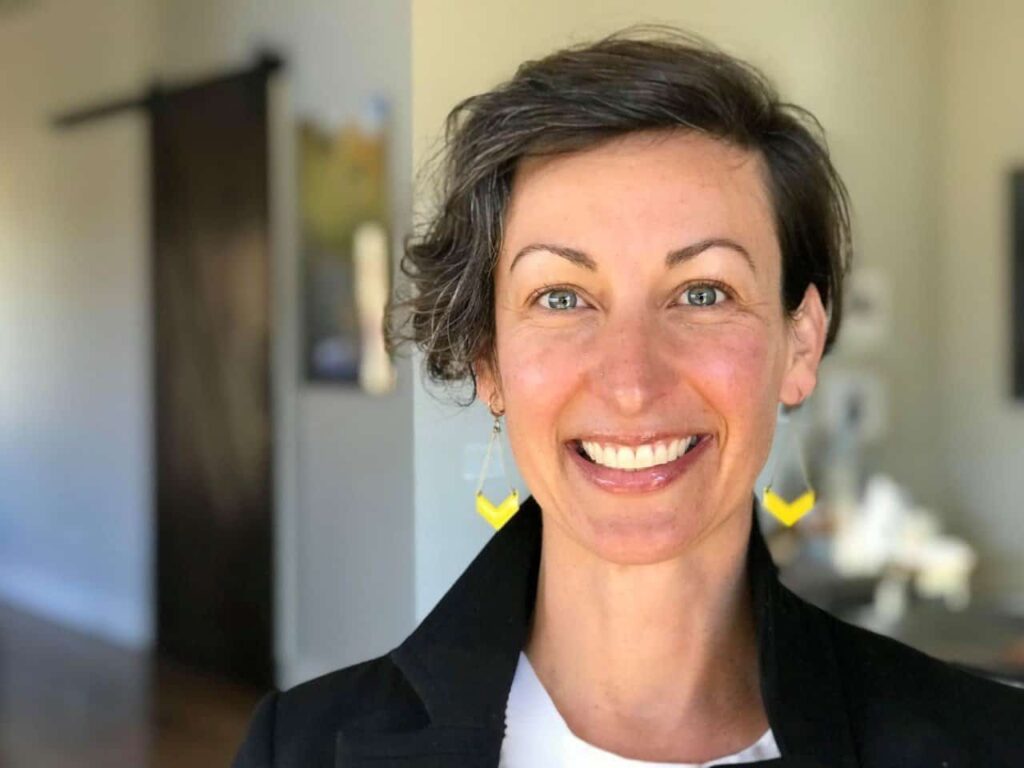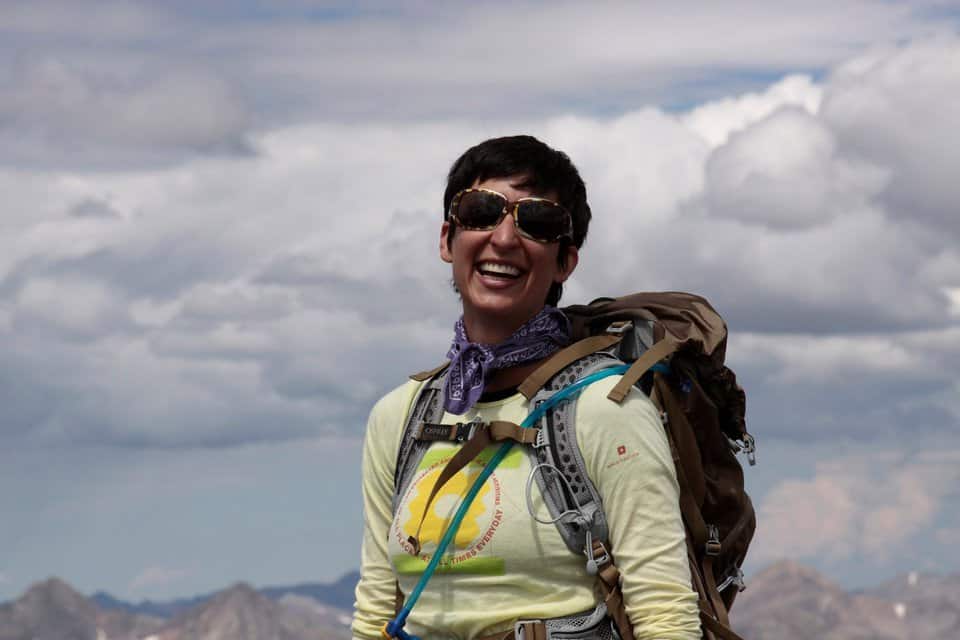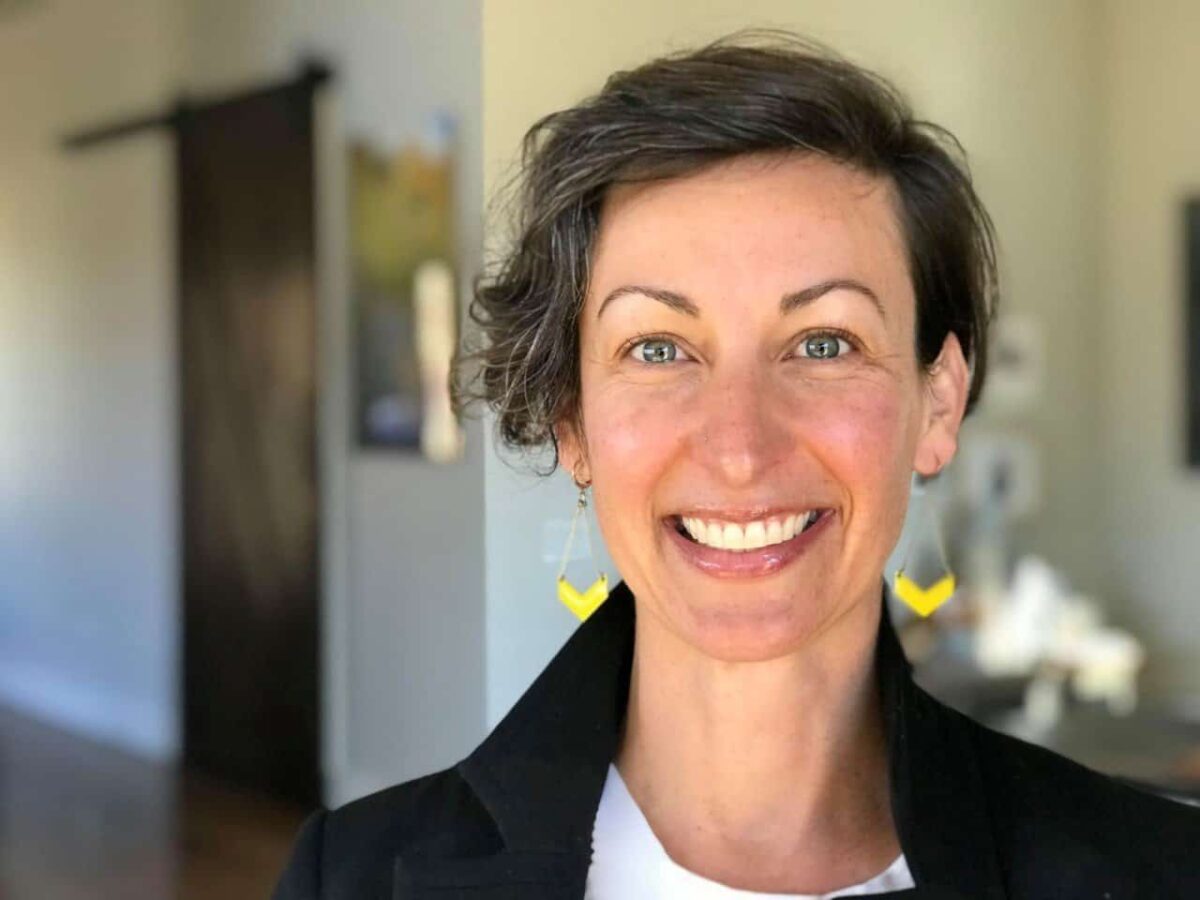
“I grew up in a quiet little town called Las Vegas, Nevada,” says Nicole Swaggerty, Western’s new director of Student Health and Wellness, with a grin.
Much of Swaggerty’s family worked within the city’s service industry. Now, she comes to Western with a background in public health, student wellness, and health planning.
Swaggerty graduated from a rural Nevadan high school east of Lake Tahoe in a class of less than 50 students. “I definitely had that ‘ahah’ mountain moment…that was back when Lake Tahoe was really pristine,” she recalls.
After a few years bouncing around, she set off for college as a nontraditional student— becoming the first to attend college in her family, and polishing off her undergraduate degree in Health Promotion at Boise State University.
“Growing up in an environment where unhealthy behaviors were the norm, I just gravitated really strongly towards that subject,” she says of her degree, which centered on broad public and community health concepts.
After graduation, Swaggerty dove into health programming within the City of Boise—aiming to tackle childhood obesity and other childhood health concerns, before homing in on a nascent Master’s of Public Health program at Colorado State University. “I applied within weeks, and really had to cram for the GRE,” she adds with a laugh.
After completing her master’s, Swaggerty utilized her newfound downtime to unwind, “chasing 14ers” and traveling around southern and western Colorado. It was during that time period that she met her future spouse.
From there, Swaggerty moved back to the Front Range, where she found employment in Jefferson County working in youth engagement, largely in the field of tobacco prevention. “It was a lot like the [traditional] peer health model—me training high school students throughout Jefferson County to do education, prevention, and policy work—and really supporting them as ambassadors,” she says of the program, which was heralded as a success.
Swaggerty went on to work for the K-12 school district serving Thornton, Brighton, and Commerce City, where she became the district’s first School Health and Wellness Coordinator. Again, a key focus became designing programs to address childhood obesity—but this time the numbers were rising rapidly, and unexpectedly.
“Colorado always trended towards the lowest numbers on obesity rates across the nation, especially for youth—and then in a very short period of time spiked up to the national trends. It was crazy how fast it happened,” she notes.
Swaggerty notes that research shows how important schools are in reducing obesity—through play and exercise programs, of course—but also through building healthy habits around food and nutrition. She says that her time with the district helped her to understand systems-level change, and how to effectively move the needle in larger, bureaucratic operations.
In 2016, Swaggerty and her husband moved to the Gunnison Valley, where she assisted Crested Butte’s Adaptive Sports Center in growing their grants program—an experience that expanded her fundraising skills.
During her three-year tenure there, she notes she “became much more aware of the power of therapeutic recreation and outdoor recreation [more generally],” and also of how disabilities intersected with other aspects of wellness.
Then in 2019, Swaggerty delved back directly back into public health with a new role at the county as a regional health planner. Her work spanned six public health departments in western Colorado—Gunnison, Montrose, Delta, Ouray, Hinsdale, and San Miguel counties.
“It was really [based] around data—data collection, data management, and then from that data [you’re] doing community health needs assessments and formalizing health plans from there,’ she adds.
Swaggerty assumed the health planner role in November 2019, just before Covid-19 began to creep into international news headlines, and soon—subsumed the world’s attention—thrusting local health departments into the spotlight.
She helped develop the county’s Covid-19 barometers and messaging, and soon found herself on calls with the state’s epidemiologist, trying to match up different data metrics to ensure that Covid-19 information was being utilized properly. “It was like trying to build a boat while it was flooding, or in the middle of whitewater,” Swaggerty recalls.
After two years in her regional gig, Swaggerty ultimately felt it was time to make a move, and soon found the Western position—where she’s excited to be back within the realm of education. She views her prior experience living and working in the valley as a definite bonus.
“To already know many community partners and have some established framework for programs happening [both] up and downvalley [has been really helpful],” she adds.
Swaggerty sees her new job, first and foremost, as being a resource guide for campus. “I’m [really] just a dot connector. Healthcare and health systems aren’t easy to navigate—especially for a young adult who’s already navigating a lot of other things in this critical time in their life,” she notes.
Her primary task, then, is to make health and wellness resources more attainable for busy college students.
“I just want to make sure [Western’s resources] are fully seamless—that it’s very easy to access and navigate whatever the health situation might be…I really feel like part of this role is creating those clear pathways, so that the access is there,” she elaborates.
Swaggerty views working with student leaders, particularly the Peer Health Educators (PHEs), as the other primary aspect of her role. “I recognize the value of those peer-to-peer exchanges and I really want to provide that leadership to make sure the students I work with are well-trained, well-versed, and well-prepared to be that first level of access [for other students]…I really see them as a huge component to [both] student success and successful health and wellness.”
Last year, Western had four PHEs: Naiya Budler (the lead), Brady Laboret, Christine Spiers, and Myles Hilbert. Next year, all but Budler will return, and it is Dean Gary Pierson’s hope to bring on two more PHEs, rounding out a team of five that can sufficiently identify and meet campus needs.
Swaggerty is also hoping to personally train more faculty across campus on mental health and emotional wellness—including on the more philosophical concept of emotional belonging. She hopes to instill pathways in various departments that can quickly link students to the necessary support.
“If a faculty member, who knows a student better than I would or Gary [Pierson] would say ‘I’m noticing some behavior change’, then they [need to] know a pathway to connect that [student] to support,’” she says of her vision.

Another large goal Swaggerty holds is to institutionalize broader cultural change around positive health. “I think there’s a big perception—and research shows, [students] perceive that ‘everybody’s drinking’, ‘everybody’s doing drugs,’ ‘everybody’s participating in all these unhealthy behaviors’. Really, in reality that’s not happening.”
Swaggerty hopes that she can fight these misconceptions with actual data collected from their peers, which will likely demonstrate lower rates of binge drinking, drug use, risky sexual behavior, and other activities than students would have imagined.
“I think some of that is just demystifying what the norms might be perceived to be. The other part is that if the [conceptions] are real—how do you address [them] and then make that behavior change?” she asks.
To that end, Swaggerty prides herself on her ability to see the broader landscape, and is eager to delve into Western’s culture to enact healthy behavioral changes that aligns with students’ values. That tactic includes posing questions to students, questions like: “What is the bigger vision you have for yourself, and how can health and wellness support you to get there?”
Swaggerty sees a natural ally for her work on campus in Western’s new Rural Health MBS program, which will graduate its first cohort next year. That program’s students could help Swaggerty with research, data analysis, and program evaluation moving forward.
And she recognizes the need for additional help when many Americans are facing substantial threats to their inner wellness, “I think in terms of the psychospiritual, stress and anxiety are at all-time highs. That’s one of those big, overshadowing [factors] that are felt as a collective,” she says.
Swaggerty highlights the particularly heightened needs of the Western Slope, and of the multicultural and LGBTQ+ communities on campus, adding “I’m looking to connect with any students that might feel like they’re on the fringe.”
Having spent just a few short weeks on the job, Swaggerty is well aware of the scope of the task at hand, specifically when it comes to the emotional, mental, and spiritual health needs on college campuses.
“There’s just much more need around supporting students [and others] who are experiencing heightened stress, anxiety, and mental and emotional health challenges,” she adds—citing the increased recognition of the larger mental health problems as a small victory unto itself, but only as a starting point.
Moving forward, Swaggerty wants to be able to assign data to these problems—assessing students’ needs each semester, and then following up at the end of the term—holding meetings with her Peer Health Educator team to discuss pathways forward.
Touching on the school’s reputation as an outdoor hub, Swaggerty cites a potential disconnect between a significant block of the student population at Western and the surrounding natural world that may be exacerbating student’s mental health needs.
She notes that it’s important to respect and acknowledge that not all students buy into the recreation culture that permeates much of Gunnison and Western—the skiing, climbing, backpacking, and boating ethic that dominate much of the discourse. But there are barriers to accessing the outdoors: Cost, transportation and time being the biggest for many college students.
Everyone can benefit physically and mentally from getting outside, she adds, but that exposure to the natural world that doesn’t always need to include extreme backcountry adventure—Swaggerty herself learned to ski in her 30s.
“I really just want to make sure that there is a good, broad array of opportunities for students,” she says. Part of that strategy is to emphasize larger, more philosophical transformations—like restoring a more human touch to campus.
Swaggerty is hoping that she can help bring more of that human element—and a focus on restorative justice—to her role in student conduct, which she admits is new territory.
But Swaggerty says that she sees a natural overlap with student wellness in the simple fact that students who are fundamentally unwell are more likely to act out, initiating the conduct process. “I think the [conduct side] can help me know what we could do better with [wellness-based] prevention,” she adds. “That’s my hopeful thinking—I’m just a dang optimist.”
When it comes to her own psychospiritual spiritual needs, Swaggerty turns largely to the outdoors, and to yoga. “I feel like I have [trained] so much in public health and western health—and I love to be balanced, so I really gravitated towards eastern philosophy—so I got trained in yoga,” she adds.
Swaggerty’s ultimate goal is that Western will cultivate a solid reputation for comprehensive health and wellness programs that will attract health-minded students to attend Western.
For students hoping to get into contact with Swaggerty about matters of student wellness and health, her office will be over in Student Affairs, on the third floor of Taylor Hall—adjacent to Dean Gary Pierson’s office.
You can also reach her at her Western email: nswaggerty@western.edu. Additionally, she hopes to engage students with a variety of methods—perhaps an anonymous feedback box or a short QR code survey, in addition to open office hours to be held in the University Center.
“I definitely want [student] feedback. Like I mentioned—working with those high school students [previously] on engagement, I realized the power they had in terms of creating change. I really want students here to feel that power.”

